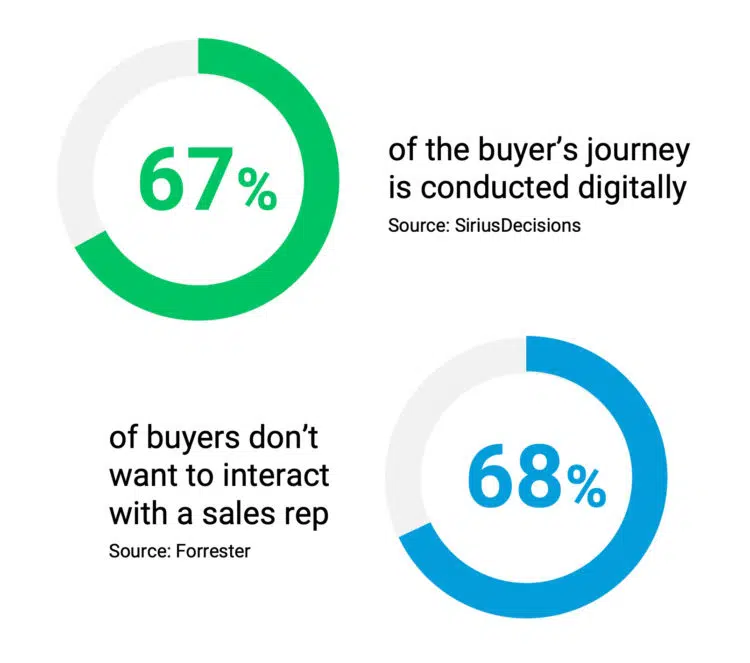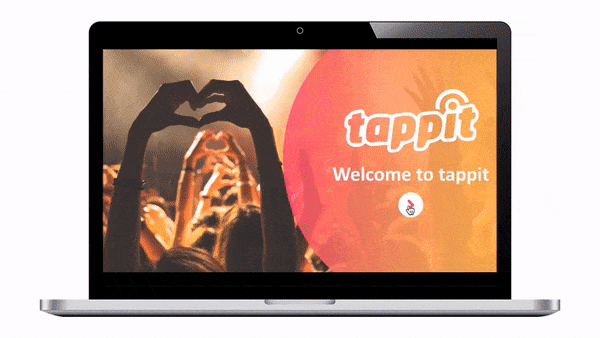
Digital selling is challenging, there’s a lot of turmoil in the market, and you’d love to get away from it all. Unfortunately, quotas don’t sleep.
As a leader, you certainly have to plan for the work disruptions and business challenges, but we encourage maintaining a different perspective.
When I was a performance driving instructor we would tell our students that “the car goes where your eyes go.” Wander off the track in a high-speed corner, and sure enough, every student that kept their focus back to the race track kept the sunny side up and avoided marring their supercar shine (while earning a John Deere decal in the process). But there would be that unfortunate occasion, where the student locked in on the wall or the lone tree in the middle of the field, and sure as heck, they’d end up just where their eyes went, in a wreck.
So how can you keep your eyes on the road in the midst of the chaos, in this case, a volatile market and new digital selling environment? We see three areas you can focus on to get your sales back on the track and win the race with sales enablement:
1) Enable your sellers to be as good at digital selling as they were in-person
Instead of face-to-face, on-site meetings, your sellers are now trying to win customers’ hearts and minds via digital selling, leveraging remote web and video conferences.
Visuals help, so your reps are likely walking the prospect through a PowerPoint deck and screen-sharing content to pace the virtual meeting. But we know that leveraging traditional linear presentations and non-personalized content falls short. Forrester indicates that 74% of buyers want sellers to pivot the presentation or meeting to discuss what the buyer wants to talk about, not what the seller has pre-prepared to present.
So how do you enable digital selling, with remote presentations that fuel provocative conversations to get your prospect’s attention, to be memorable and inspire action?
Go Digital – Those paper presentations, brochures, and data sheets no longer work when you can’t physically share them during face-to-face meetings. And mailing them to customers’ homes is not an option either.
For those who have not done so yet, it is time to convert from paper-based to virtual selling, and enable sellers to easily find, present, and share the right content with each unique prospect.
You can leverage a modern sales enablement platform to enable sellers to easily find and leverage the right content for each customer, from a catalog of up-to-date, compliant resources. A digital catalog can be created to replace the paper and binders, and data sheets and other materials can be uploaded and presented dynamically in digital meetings. After the meeting, you can share all the material you presented as a collection – a completely personalized brochure for each customer.
Visual appeal matters – You can’t force your remote audience to pay attention during your digital sales meeting, however, a presentation with sizzle can help.
Adding visual appeal, transitions and on-screen animations go a long way towards capturing and driving engagement. Your sales enablement platform should provide support, making the transition between each page or piece of content not just snappy, but sexy, and supporting incremental builds and other dynamic elements.
Vignettes vs. Big Decks – We recommend breaking your big presentations into what we call vignettes: small stories of one or a few slides each, centered around a point of view, challenge, use case, solution, and/or success story.
Instead of distributing the big deck, you instead publish the vignettes into your Sales Enablement platform (and create a collection representing the full deck just so all the content is in one location). Digital sellers can select the most relevant vignettes for the customer ahead of the meeting, combine them with videos, infographics, and other collateral, and assemble them into a collection for presentation, but most importantly, quickly search for, find and pivot to the vignette that is most relevant to where Discovery questions took the conversation, and what the customer would like to discuss most.
Interactives – Linear presentations of content aren’t appealing and lack pizazz. Imagine if your seller could click on the most important elements of a “day in the life”, lifecycle process, solution drawing or virtual visual, and navigate to the right vignette, video, demo example, collateral, or success story.
Instead of linear wading through a PowerPoint deck, your sellers can jump directly to the prospect’s priority issues and highlight the differentiators of your solution in the virtual meeting. Hierarchical navigation using drawings, animations, and vignettes can guide a seller to exactly where the customer wants and needs to go.
Build a value storytelling presentation – Rather than providing sales with a big 150-page deck that they have to manually customize for each remote presentation, you can automate the assembly of the presentations into compelling value stories. A sales enablement platform can provide a question wizard, presented to the seller to guide understanding of the customer’s profile, challenges, and solution desires and then build the right deck, custom assembled automatically to match each unique selling situation.
The deck can be assembled automatically into a value story, leveraging the CLOSE method to:
- Challenge – Emotionally and empathetically connect to buyer challenges first
- Loss – Quantify the loss of “do nothing” new
- Opportunity – Pivot to a vision to address the opportunity
- Solution – Propose the right solution and quantify business value benefits
- Evidence – Success stories to prove the low risk and substantial benefits other similar customers have achieved.

From this proposed value story deck, the seller can then further customize the experience, but all the heavy lifting has been done.
Share a collection – Once the virtual meeting is complete, timely follow-up is vital to further reinforce what was presented. You should enable easy sharing of the personalized presentation material.
Leveraging your sales enablement platform, your seller can immediately share the collection of presented vignettes, demo links, videos, success stories, and other customer content in a customized collection, sending to all attendees. Sharing is tracked so the seller (and you) know who opened the collection, how long they spent interacting with each element and page, and who they shared the content with on the customer’s ever-expanding buying committee.
Implement remote learning – You have to assure that these new remote presentations, tools and campaign capabilities, credibility, and confidence are in place with your sellers, but getting everyone together for traditional training won’t be an option. Taking advantage of modern sales readiness is critical, leveraging remote training, micro-learning, continuous reinforcement, and remote coaching to help boost seller skills and improve capabilities.
You can get back on track by focusing on improving remote presentations, content, and tools to elevate the remote experience for sellers and differentiating for customers.
Our guide How Sales Enablement Technology Can Help You Overcome 10 Common B2B Challenges has more tips for digital selling.
2) Empower your sellers to help more risk-averse and frugal buyers justify purchases
Your customers are worried about their future and unclear on go-forward budgets so they are shutting down or pushing back on your proposals.
In order to get the attention your initiative deserves and priority for constrained and locked-down budgets, you need a solid business case to provide financial justification.
Your sellers should be empowered to co-create a business case with every customer, to clearly communicate and quantify the cost of “do nothing” new and the business value your proposed solution can uniquely deliver.
Fail to proactively provide the financial justification and your proposal will likely end in “no decision” or get postponed until the dust clears and certainty returns. This could be months.
Leveraging a spreadsheet-based tool is a start to providing justification, but sharing a complex spreadsheet in an online virtual meeting and working interactively with the customer through all the rows, columns and fields is clumsy. Adoption and version control are just a few more of the issues with spreadsheet-based justification tools.
Focus means evolving from spreadsheets to an interactive business value assessment tool to help:
- Interactive discovery of the prospect’s challenges, current state, and opportunities
- A tally of “do nothing” differently costs
- An estimate of the potential business value benefits from your solution – a tally of the cost savings/avoidance, productivity/process improvements, risk avoidance, and business growth your solution can help provide
- A quantification of the cash flow your project could generate, comparing potential business value benefits versus required investments, risk-adjusted to account for implementation and adoption optimization, and summarized into the key financial measures of ROI, NPV savings, and payback.
- Relevant success stories, to show how others just like your prospect have achieved similar significant benefits.
The seller can use the business value assessment tool with the customer to drive virtual interactions to gather data, review and refine results. Assessment reports can be combined with other content, and the collection sent to the buying group, tracking views, time spent, and sharing.
You can hear how Latane Conant, CMO from 6sense leverages Value selling and marketing tools (powered by Mediafly) to reduce sales cycles and drive incremental opportunities in a tough environment here.
3) Improve visibility and clarity
All eyes are going to be on marketing and sales to deliver despite the tough environment.
You’ll be asked every week (if not every day) if the new sales plays and content are delivering. You’ll need to provide assurances that sales forecasts are accurate and deals are progressing as planned. All this while the environment and market are casting a fog and obfuscating what is real and what is fiction. This is where digital engagement insights come into play.
First, you’ll need to get everything you can from your new sales plays, marketing content, and tightened marketing budgets. As a marketer, you’ll need to quickly assess and prove that new crisis-oriented sales plays and marketing content are being leveraged and driving intended impact. And, as revenues tighten, you’ll be asked to refine your marketing budget overall, and quickly identify any waste.
To help, leverage insights on:
- Opportunistic campaign success – For new marketing campaigns and sales plays, it is essential that you know as soon as possible what is working or not. Are your sales reps viewing and leveraging the content as intended? Is the buyer-centric content you provided shared with prospects? Are your prospects consuming and sharing the content? Did the content contribute to moving the needle (driving wins, shortening sales cycles, increasing deal size)? Tracking and intelligence on your new sales plays and related campaign content will help you and your team fine-tune the approach and assure success.
- Sales content spend – You know that up to half of your sales content spend is wasted, but without the right insights, you don’t know which half it is. Knowing which sales content is being viewed, used, consumed, and driving business outcomes can help clarify the content that should be retired and inform which content warrants future investment
Forecasting is often difficult. Throw in additional uncertainty, and providing a predictable view of which deals will close or not can be impossible. However, if you know more precisely which customer stakeholders and roles have been engaged, which content has been shared and consumed, and how engaged each customer is, you can have much greater visibility.
This helps:
- Sales visibility – Relying on sellers to manually indicate what they have done with clients and what stage each deal is at can be troublesome to the integrity of deal forecasting. Sales enablement can be leveraged to automatically tally what meetings occurred, and what was actually presented, sent, consumed, and shared by who and when in each opportunity, improving the visibility into how engaged each customer is and providing truth as to the integrity of forecasted close estimates.
- Sales coaching – Customer engagement insights will let front-line sales managers know what they need to do in each deal in order to help move the opportunity to the next stage.
Learn more about how to leverage insights to track and optimize your content and forecast integrity here.
The Bottom-Line
When things get crazy and uncertain, like when you cook a corner venturing from the track onto the grass it is essential to avoid focusing on what you could hit, and instead, put all your energy into getting back to the track.
We encourage sales enablement to focus on these three remote capabilities to transcend the Quotas Don’t Sleep crisis and get back on track:
- Empower more effective and differentiating remote sales presentations
- Enable interactive financial justification with effective value selling tools
- Leverage content and customer engagement insights to put your marketing budget to work
Need more tips for digital selling? Visit our digital and remote selling resource page.



Comments are closed.